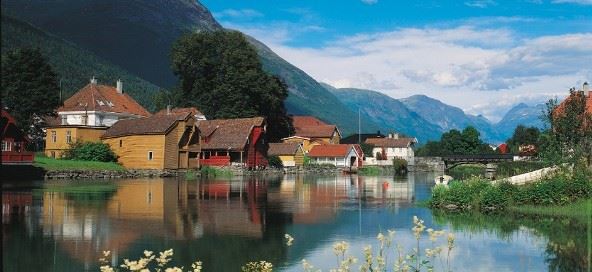You could be forgiven for thinking that all roads around the Norwegian fjords are scenic, but it turns out that some have a special status. The Norwegian government recently established 18 National Tourist Routes, chosen to provide an easy way for visitors to experience the best of the country’s incredible landscapes. Most of these are relatively short, allowing you to combine several routes within a single driving holiday. Those planning a holiday to soak up the beauty of the fjords should take heed of a important warning while drawing up their routes; most people end up covering far fewer miles in a typical day than they expect, thanks to the almost non-stop photo opportunities which present themselves along the way.
The best advice is to take it very steadily and allow plenty of time to experience the natural wonders of this special region. Here’s a suggested route which takes in 4 National Routes in South West Norway and covers some truly world-class scenery.
1. Geiranger – Trollstigen. Starting in Åndalsnes, the route runs for a little over 100 km along Road 63, and even includes a ferry trip across Storfjorden. Highlights along the way include the Trollstigen viewing platform which allows visitors to stand over a ledge hanging a dizzying 200 metres above the valley below. As with all of the routes there are plenty of opportunities to stop and take a hike – much of the route follows an old pack horse trail which linked the local villages for many years before the road was constructed in the early 20th century. The route ends at Geirangerfjord, one of the most scenic and most famous of Norway’s fjords.
2. Gamle Strynefjellsvegen. This route runs for barely 25 km, but is memorable as much for its history as it is for its beautiful scenery. The short stretch of road was built by manual labour in the 19th century, and you’ll still see old stones and upright guard stones at the side of the narrow road. You can stop along the way to admire several waterfalls, and those keen to take to the water might consider packing a kayak on the roof and enjoying a paddle in one the crystal-clear tarns.
3. Sognefjellet. This stretch of around 100 km is Europe’s highest mountain pass, crossing a summit at 1,434 metres above sea level. There are plenty of look-out points along the way, with towering mountains and deep valleys vying for photos along almost every mile. The route ends on the shores of Sognefjord, where the reward for your driving efforts is the chance to sit by the waterfront and admire the dramatic views. Visit Lom at the northern end of the route for great local food and a look inside Lom Stave Church, a remarkable wooden construction from the 12th century.
4. Aurlandsfjellet. The ultimate route for splendid isolation, it’s easy to look at the views along this 47 km route and appreciate that (apart from the road) they haven’t changed for centuries. Stop along the way at the spectacular look-out at Stegastein, and visit the art installation DEN by American artist Mark Dion.


